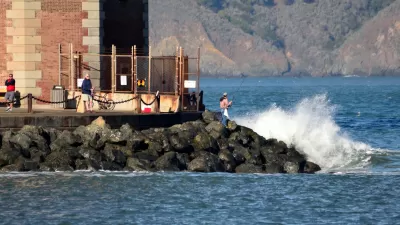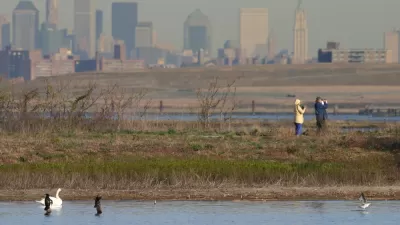A new model for expected sea-level rise raises alarms about the need to adapt to sea-level rise in coastal cities all over the world.

"Rising seas could affect three times more people by 2050 than previously thought, according to new research, threatening to all but erase some of the world’s great coastal cities," report Denise Lu and Christopher Flavelle.
Scott A. Kulp and Benjamin H. Strauss, researchers from Climate Central, published the new findings on the elevations of sea-level rise in the journal Nature Communications. According to the model produced in the study, 630 million people live in land below elevations projected for annual floods in the year 2100. "We estimate one billion people now occupy land less than 10 m above current high tide lines, including 250 M below 1 m," reads the study's abstract.
The article provides illustrations of the stark reality of such projections. "Southern Vietnam could all but disappear," for instance. "More than 20 million people in Vietnam, almost one-quarter of the population, live on land that will be inundated." Bangkok, Shanghai, Mumbai, Alexandria, and Basra will all be severely inundated by the end of the century according to the model.
FULL STORY: Rising Seas Will Erase More Cities by 2050, New Research Shows

Trump Administration Could Effectively End Housing Voucher Program
Federal officials are eyeing major cuts to the Section 8 program that helps millions of low-income households pay rent.

Planetizen Federal Action Tracker
A weekly monitor of how Trump’s orders and actions are impacting planners and planning in America.

The 120 Year Old Tiny Home Villages That Sheltered San Francisco’s Earthquake Refugees
More than a century ago, San Francisco mobilized to house thousands of residents displaced by the 1906 earthquake. Could their strategy offer a model for the present?

HSR Reaches Key Settlement in Northern California City
The state’s high-speed rail authority reached an agreement with Millbrae, a key city on the train’s proposed route to San Francisco.

Washington State Legislature Passes Parking Reform Bill
A bill that would limit parking requirements for new developments is headed to the governor’s desk.

Missouri Law Would Ban Protections for Housing Voucher Users
A state law seeks to overturn source-of-income discrimination bans passed by several Missouri cities.
Urban Design for Planners 1: Software Tools
This six-course series explores essential urban design concepts using open source software and equips planners with the tools they need to participate fully in the urban design process.
Planning for Universal Design
Learn the tools for implementing Universal Design in planning regulations.
Ada County Highway District
Clanton & Associates, Inc.
Jessamine County Fiscal Court
Institute for Housing and Urban Development Studies (IHS)
City of Grandview
Harvard GSD Executive Education
Toledo-Lucas County Plan Commissions
Salt Lake City
NYU Wagner Graduate School of Public Service





























